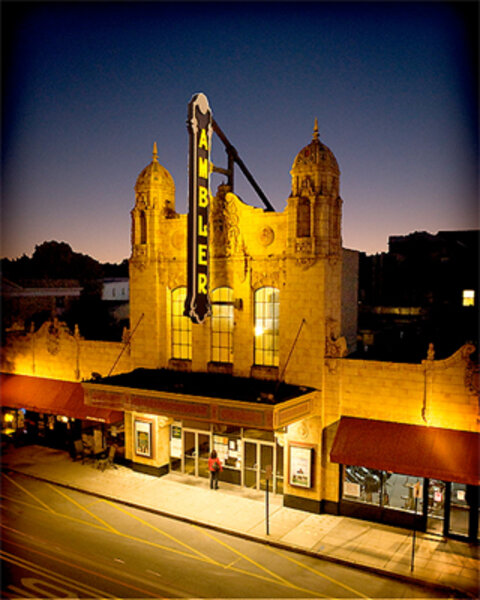A reel cinema's digital divide
Loading...
Have America’s independent, mom and pop cinemas slipped a sprocket? Suddenly, simultaneously, they are offering up T-shirts, movie posters, bottomless buckets of popcorn – even allowing patrons to reserve the theater for a private showing of the flick of their choice. How on earth are these rickety old businesses going to make ends meet with such extravagances?
It’s actually part of a strategy. Those are just a few examples of the lengths small US cinemas are going to in order to raise funds for the mandatory changeover from the century-old movie medium of 35-mm film to the pristine (and costly) new world of all-digital projection. By the end of 2013, virtually no contemporary motion pictures will be available on film, and although the megachains have been projecting digital films for several years now, most of the tiny, historical cinemas across America are facing a looming industry-wide edict: Convert or perish.
Since most of these small theaters barely scrape by to begin with, the $100,000 or so required to replace film projectors with digital ones for each screen is an expense few can handle without a clarion call to their customers, something along the lines of “HELLLLP!!!” Not all of them will be able to make it work. That an estimated 1,000 movie houses could go dark in the next few years is an unhappy thought, but hardly hyperbole.
Many of these Depression-era gems aren’t about to surrender, however. Feisty cinema owners from Maine to California are working through organizations such as Kickstarter to raise funds to purchase and install digital systems. The historical Brattle Theatre in Cambridge, Mass., just met its conversion goal with $140,000 in donations. The Ambler and the County – sister indie cinemas in suburban Philadelphia – recently topped $300,000 each for their multiscreen upgrades. To secure a bank loan for its conversion, Midtown Cinema in Harrisburg, Pa., created a “Summer of 10,000 Tickets” promotion and asked area residents to step up their moviegoing. In 14 weeks it met its goal and the bank was impressed. Midtown scored a projector and a bunch of new patrons.
Will there be a happy ending for these little movie houses? It’s still going to be tough going head to head with the multiplexes. But for a while, at least, they live to fight another day – and night.







